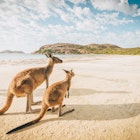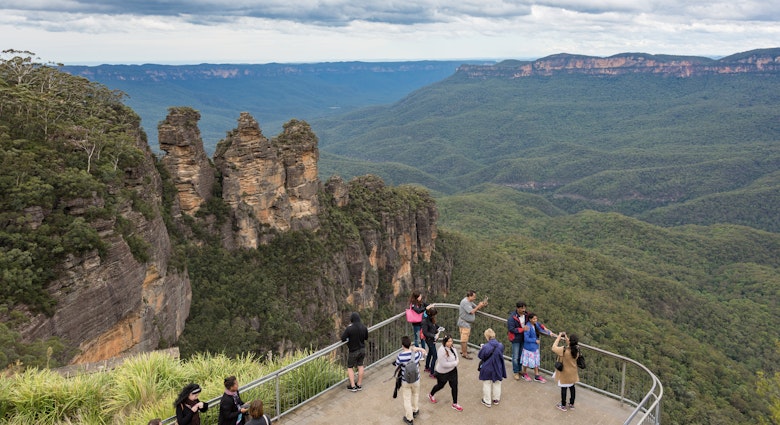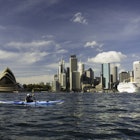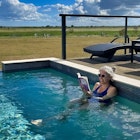
Australian bushfires: what should you do if you have a trip booked?

Jan 3, 2020 • 6 min read

The devastating bushfires burning so much of Australia are heart-wrenching reminders of the power of nature and the impact of a changing climate on vulnerable ecosystems.

If you have a trip booked, should you continue with your trip in the coming weeks or months? At the end of the day, you need to make your own decision. There are parts of Australia that will certainly welcome your tourist dollars, but if you were planning to visit pretty much anywhere southeast of the line between Sydney and Melbourne you’ll probably have to go somewhere else: these bushfire-hit areas are not the place for your travel right now and are under evacuation orders.
Even cities like Canberra and Sydney are choked with bushfire smoke, but with continent-wide heatwaves, ongoing drought in many areas, and temperatures regularly exceeding 40°C, it’s hard to say 'avoid area X and go to area Y' because there’s simply no way to know where’s next. before travelling anywhere.
Ask the people in your destination
As with most things travel, the best source of information is often the people in places where you’re visiting. If you’re staying with friends or family, take their advice on whether it makes sense to continue with your plans, or it is preferable to adjust them or to cancel. If you’re staying at a hotel or renting a place, ask them, or find a number or email address for the local tourist information board.
Read more: 'Empty Esky' campaign aims to revive bushfire-ravaged communities in Australia
Most Australians living outside major cities, and even many living in urban areas, will have bushfire survival plans, and most tourist accommodation should as well. Ask for advice on what the plan is wherever you're staying, but it's likely to be: get out early. Talk to anyone else you're travelling with: if your travel partner is asthmatic or has other health conditions, you might well make different choices.
Check with your travel insurance: it might not cover bushfires
The basic rule when it comes to natural disasters and travel insurance are that you should read your policy very carefully to ensure it covers them, and that you’ll need to have taken out the policy in advance of the disaster starting. Now that theand neighbouring , if your policy has a natural disasters clause then it’s time to talk to your insurance if you decide it’s more sensible not to travel.
Read more: How you can help koalas that have been devastated by Australian bushfires
Most policies have some sort of 'reasonable person' test, and you probably wouldn’t want to rely on the terms of a policy you took out this week if you made the choice to travel and were caught up in a bushfire in Australia: a reasonable person could arguably probably not have continued their trip. And don’t forget, as a general rule you need to declare any medical conditions while taking out the policy, so if the childhood asthma you forgot to mention happened to flare up in Canberra, where the smoke is so bad it’s setting off fire alarms inside buildings, you might not be able to claim.

Ask your doctor before you leave home
Definitely consult your doctor before departing if you have any worries, especially if you have or have had respiratory problems or even a bad cold or flu-like illness this year. It’s always a good idea to make sure your vaccinations are up to date, even for things like the flu: you don’t want to end up with that if the city you’re in is blanketed with smoke.
Read more: See the Sydney Opera House illuminated with a tribute to firefighters
Consider bringing a filtering mask with you. The ones to look for are called N95 or P2, experts , and are relatively inexpensive. Be aware that these need to fit tightly, so anyone sporting a beard, take note and take a razor.
If you decide to go, be prepared and stay informed
Wherever you’re travelling in Australia, make sure you know where to find up-to-the-minute information. This is definitely a trip where you want to make sure that you’ll have full mobile phone data and call connectivity, so pick up a SIM card at the airport or get an eSIM if your phone supports them.
Somewhat confusingly for visitors, every Australian state and territory has its own sources of information, and separate authorities for emergency information, including bushfires. This is particularly tricky if you were planning to be on the border of two states, like the Victoria/New South Wales border that is currently experiencing major bushfires.
Read more: Where (not) to go in 2100: sites under threat from climate change
Most have something like website and partner app, but run a web search for 'fire information' and the name of the state or states you’re going to. Also consult the country fire services like NSW’s Rural Fire Service or Victoria’s Country Fire Authority. Most also have active Twitter accounts, which is an excellent way to stay on top of developing information. But never rely on just one way to get crucial news. is a vital source of information, so make sure you know how to find it, whether listening online or via the radio where you’re staying or in a car.
Check the Fire Danger Rating daily
It goes from 'Low-Moderate' to 'High', 'Very High', 'Severe', 'Extreme' and either 'Code Red' or 'Catastrophic' depending on which state it is. These tell you how dangerous a fire would be if it started, but it’s hard for visitors and people unused to fires to make their own assessment. Ask around, and see what other people’s plans are, and figure out what your trigger to leave is. As a rule, the most sensible course of action for any traveller is to stay away from areas of high fire risk during anything that’s 'Severe' or above.
Read more: Five ways climate change will affect your flights
You should leave immediately if, when and how directed, either the night before high-risk days or early in the day. Head for built-up urban areas in larger cities, which are the safest places to be, and listen out for when it’s safe to return. If you don’t know how fire behaves, you’ve not been trained in how to survive bushfires, the last thing local authorities need to deal with is more people stuck on a rural town beach or other place of last resort. Be sensible and be safe if you’re travelling in Australia soon.
Explore related stories

Beaches
These 5 day trips from Sydney will show you the splendors of New South WalesNov 22, 2024 • 7 min read

 OutdoorsKayak, SUP and whitewater: the best places to paddle in Australia
OutdoorsKayak, SUP and whitewater: the best places to paddle in AustraliaJun 19, 2024 • 7 min read
 Water SportsWhy Belize is better for scuba diving than the Great Barrier Reef
Water SportsWhy Belize is better for scuba diving than the Great Barrier ReefMay 21, 2024 • 5 min read






